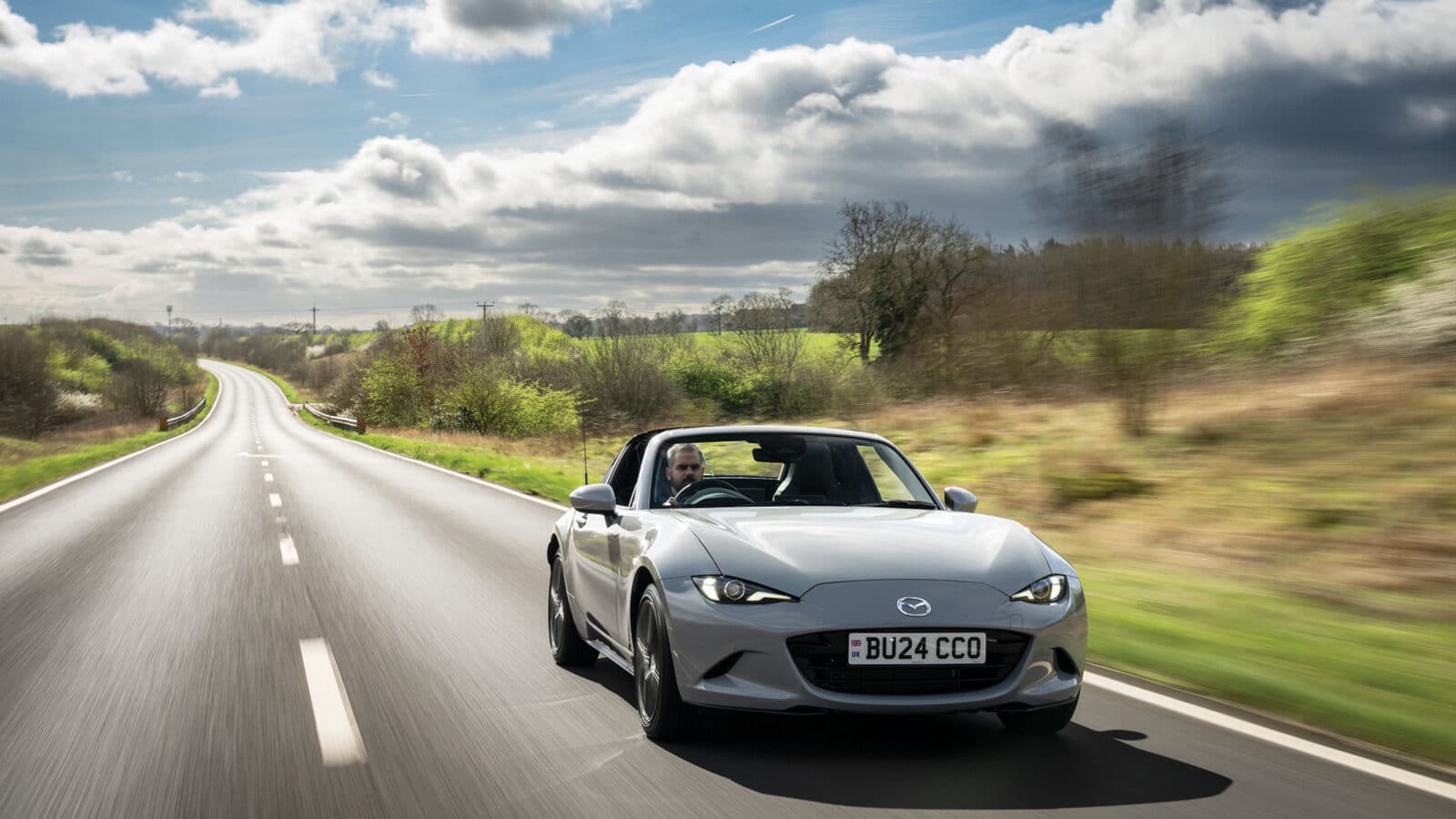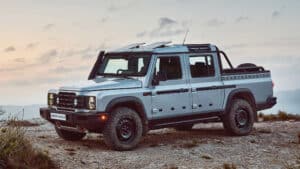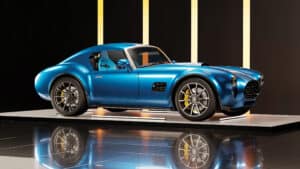Andrew Frankel: Is petrol fashionable again?
Our columnist commends Mercedes’ decision to develop an all-new V8 engine

Is it time for carmakers to follow in Mazda’s footsteps and bring back the sporty two-seater?
Mazda
Far from rushing towards electrification, it is well known that every ‘legacy’ manufacturer with a history steeped in petrol and diesel cars has jammed on the brakes so hard I can hear the ABS from here. And in one regard, at least one of them appears to be heading in the other direction. For Mercedes-Benz is developing an all-new V8 engine.
This, you will recall, is the company that forsook a 4-litre V8 for a 2-litre straight four in the latest AMG C-Class and was surprised that people objected. Turns out that just having massive power wasn’t quite the draw it expected as customers turned on their heels or simply hung on to what they already had. That heavily hybridised engine was meant to be rolled out across other models as customers clamoured for more energy efficient downsized powertrains. Except they didn’t. Or at least not in sufficient numbers. Hence the new V8 will make its debut in the CLE63 later this year and, though Mercedes denies it, I’ll bet that when you lift the bonnet of the facelifted C-Class sometime next year, the number of cylinders found thereunder will have mysteriously doubled.
“Calls for F1 cars to be powered by screaming V10s is music to my ears”
The calls for Formula 1 cars to be powered by screaming V10s fed with synthetic fuels is music to my ears, both literally and figuratively. But I know there are those who point out that the big OEMs who build current F1 powertrains and have electrified road cars to sell would never wear it. I’m sure there was a time when that was the case, but as the path towards electrification appears to become longer and more circuitous with every passing day, now I’m not so sure.
But why does it even have to be an either-or? When the F1 World Championship first came into being, constructors were offered the choice of a small forced-induction engine or something larger and naturally aspirated. Again in the 1970s and ’80s mixed fields of turbo and non-turbo cars coexisted. So why not now? Let those who want dull-sounding hybrids have them, while others, perhaps smaller outfits with more restricted budgets, could have a far more affordable howling V10 and a pot of change to spend on drivers or other areas of the car.
What always kills these ideas is that one route proves more successful than the other which then gets dropped. But I’ve said it before and will do again, if Balance of Performance measures are accepted as a necessary evil at the top level of sports car racing, why not for open-wheelers too? Some will understandably baulk at the idea, but if that’s what’s required to make F1 finally sound as good as it now looks, I’m in favour.
A quick question. Name a rival for the Mazda MX-5. But it’s a trick one, because today it is the world’s only mainstream affordable two-seat open sports car. And there’s a reason for this: you can’t make money from niche products with low margins. Only when you start to get towards Porsche Boxster territory (and margins) do they start to make sense. And right now affordable sports cars are niche to the point of invisibility, the great rule-busting Mazda being the only exception.
It wasn’t always so. In the 1960s and ’70s open two-seaters were everywhere. British cars like the Triumph Spitfire and MG’s MGB and Midget sold strongly, racking up over a million sales between them. But such cars have since fallen out of fashion. Could there be a way back? Whatever their ad agencies might have liked you to think, such cars rarely sold on dynamic ability, not least because they didn’t have much. They sold on looks and an adventurous image. And emergent EV tech and platforms mean such a car would now be far cheaper and easier to design.
Such cars sold for primarily recreational purposes wouldn’t need a vast battery so could be made to be light and therefore pretty good to drive with the battery pack laid out skateboard-style as low as possible and entirely within the wheelbase. Maybe it’s because spring is here, but I can envisage a beautiful, small two-seat electric sports car becoming the thing to be seen in, both around town and for trips to country pubs. Maybe their time will come again.
I’ve been thinking a lot about the 30th anniversary of McLaren’s Le Mans win and I hope that rumours of Woking heading back to France with a prototype capable of winning outright in the not-too-distant are true.
At the time, my view was that the McLaren F1s would qualify unremarkably thanks to their naturally aspirated engine, briefly shine in the race, then retire through mechanical maladies, largely relating to their road car gearbox. Well, two out of three ain’t bad. They didn’t go that quick in qualifying, they did overwhelm the more fragile Ferraris and prototypes hobbled by tiny fuel tanks and soon led the race. But then one F1 or another (I think three led at various times) headed the field until the flag fell on a truly wet Le Mans.
As well as winning, there were four McLarens in the top five and none retired through mechanical failure. And up until that moment, not one had ever raced in the wet. I still rank it among the greatest achievements in the history of sports car racing.
Ineos Quartermaster Trialmaster edition
It’s no Defender but it’s rugged as they come
The ride quality is, at times, awful and the steering’s so vague if I hadn’t grown up with pre-war machinery I’d have thought there was something wrong with it. And yet, I spent a day subjecting it to all kinds of torture, and it lapped it up with relish.
Verdict: Credit for a rough, tough off-roader
Volkswagen ‘ID.1’ for ’27
Entry level VW set for 2027 launch
Here’s a concept of the EV car that will replace the much-missed Up!. For now it’s called ID Every1 but I’d bet it’ll turn up in 2027 as the ID.1. Best of all is a price of around £17,000, bringing quality German EV engineering to an audience that would never have been able to afford it before.
Cobra Coupé arrives
If you thought AC long gone, think again
Headquartered at Donington Park, AC, which still produces the much-evolved Cobra, has revealed its first ever Cobra coupé, above, and put the beautiful Ace back in production. And now another old name is back in the frame as Cobra production will soon start in Sweden in a factory previously occupied by Saab.



